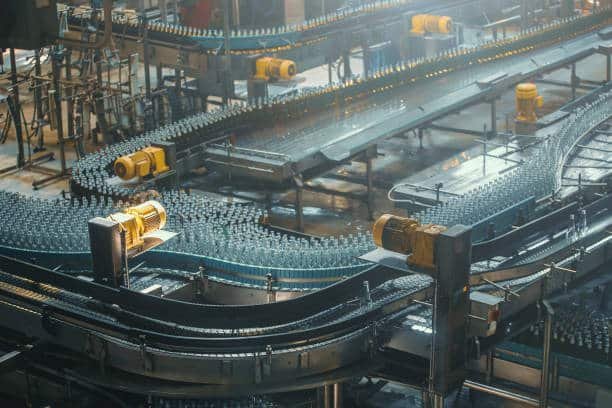How To Get Greener With IT: It’s Recycling
Recycling IT equipment is an important step in getting Greener and in protecting the environment.
IT recycling helps to conserve valuable resources and reduce energy consumption.
Recycling is also one of the most important steps in becoming more eco-friendly.
By recycling your IT equipment, you can reduce the impact that technology has on our environment and help to create a greener future.
Not only does it save resources and energy, but it also helps to keep harmful materials out of landfills. With proper recycling, we can all do our part to make sure that our planet stays healthy for generations to come.
Meanwhile, in today’s world, technology has become an essential aspect of our daily lives. From smartphones to laptops and desktops, technology has revolutionized the way we work, communicate and live.
However, with the increasing demand for electronic devices, the amount of electronic waste produced is also increasing at an alarming rate.
Electronic waste, also known as e-waste, is a serious environmental concern that poses a threat to our health and the planet’s well-being.
In this article, we will discuss how you can get greener with IT recycling and reduce the impact of e-waste on the environment.

1. Identify electronic items that can be recycled.
When it comes to reducing our impact on the environment, proper disposal of electronic waste is an essential step. If you want to “Get Greener” with IT, recycling your electronic items properly is a must. To begin with, it’s important to identify which electronic items can be recycled. This includes computers, laptops, servers, monitors, printers, gaming consoles, smartphones, and other similar items. It’s crucial to dispose of these items responsibly as they can contain harmful chemicals, such as lead and mercury, that can have a significant impact on the environment and human health. Recycling these items can help reduce the amount of e-waste ending up in landfills, conserve natural resources, and lower the carbon footprint. By taking the initiative to recycle your electronic items, you are contributing to a sustainable future for generations to come.
2. Find a local electronic waste recycling center.
Get Greener with IT Recycling! One of the most effective ways to reduce the impact of electronic waste on the environment is to recycle old electronics properly. The first step in the process is to find a local electronic waste recycling center that accepts your old tech. These centers can help you recycle your old laptops, smartphones, printers, and other tech equipment safely and responsibly, reducing the amount of electronics in landfills and reducing the risk of hazardous chemicals being released into the air and water. Some larger electronics retailers and manufacturers may also offer recycling programs. By recycling your old tech, you can help reduce the environmental impact of electronic waste and promote a healthier and more sustainable world for future generations.
3. Determine if the recycling center offers pickup or drop-off services.
One important aspect of implementing IT recycling measures is determining if the recycling center offers pickup or drop-off services. This will depend on the size of your organization and the amount of e-waste you have to dispose of. Smaller organizations may find drop-off services more convenient, as it allows them to bring their e-waste to the recycling center. In contrast, larger organizations may benefit from having e-waste picked up on-site. This can save time and effort, particularly if there is a large amount of e-waste to recycle. By evaluating the size of your IT setup, you can determine whether to opt for pickup or drop-off services, getting greener with IT recycling.
4. Back up and erase sensitive data from the electronic items before recycling.
If you want to get greener with IT recycling, it is crucial to back up and erase sensitive data from your electronic items before recycling. This is important to ensure that no personal or confidential information is accessed by unauthorized individuals after disposing of the item. Many electronic devices, such as laptops and smartphones, contain sensitive information like login credentials, personal data, and financial information. Erasing this data before disposal ensures that it is not accessible by anyone who may be able to recover it from the device. This process is often referred to as data wiping or data erasure and it helps protect your privacy and security when recycling electronic devices. It’s essential to take this step seriously, as failing to erase sensitive data could result in identity theft, financial losses, or other serious issues.
5. Encourage others to recycle their electronic items to reduce e-waste.
In order to become more environmentally conscious, one of the most important steps we can take is to recycle electronic items. By doing so, we can reduce the amount of e-waste that ends up in landfills, where it can release harmful toxins into the soil and water. However, it’s not enough to recycle our own devices. We need to encourage others to do the same, whether it be friends, family, or coworkers. This can be done by providing information on the benefits of recycling electronics, as well as the programs and resources available in the community for e-waste disposal. By actively encouraging others to participate in IT recycling, we can have a bigger impact on reducing our carbon footprint and creating a more sustainable future for all. To get greener with IT recycling, let us spread awareness and work together towards a greener future.
Conclusion
In summary, IT recycling is one of the most effective ways to reduce our carbon footprint while still taking advantage of the latest technology. By reusing and recycling our electronics, we can reduce the amount of waste that ends up in landfills, conserve resources, and reduce the use of harmful chemicals. Additionally, recycling IT equipment can also provide a valuable source of raw materials, creating a circular economy that benefits the environment and the economy alike. So let’s all make a commitment to IT recycling and do our part in protecting our planet!
Check here for Recycling as a Sustainable Living guide
Here are some reputable websites that provide more information on how to get greener with IT recycling:
- Environmental Protection Agency (EPA) – Electronics Donation and Recycling: https://www.epa.gov/recycle/electronics-donation-and-recycling
- Earth911 – How to Recycle Computers and Electronics: https://earth911.com/business-policy/how-to-recycle-computers-and-electronics/
- National Institute of Standards and Technology (NIST) – Computer and Electronics Recycling Guide: https://www.nist.gov/topics/sustainability/computer-and-electronics-recycling-guide
- TechRepublic – How to recycle your old computer: A step-by-step guide: https://www.techrepublic.com/article/how-to-recycle-your-old-computer-a-step-by-step-guide/
- Greenpeace – Guide to Greener Electronics: https://www.greenpeace.org/usa/sustainable-computing/guide-to-greener-electronics/


